Various - Birds, Illustrated by Color Photography, Vol. 2, No. 4
Здесь есть возможность читать онлайн «Various - Birds, Illustrated by Color Photography, Vol. 2, No. 4» — ознакомительный отрывок электронной книги совершенно бесплатно, а после прочтения отрывка купить полную версию. В некоторых случаях можно слушать аудио, скачать через торрент в формате fb2 и присутствует краткое содержание. Жанр: periodic, Биология, Природа и животные, foreign_edu, на английском языке. Описание произведения, (предисловие) а так же отзывы посетителей доступны на портале библиотеки ЛибКат.
- Название:Birds, Illustrated by Color Photography, Vol. 2, No. 4
- Автор:
- Жанр:
- Год:неизвестен
- ISBN:нет данных
- Рейтинг книги:4 / 5. Голосов: 1
-
Избранное:Добавить в избранное
- Отзывы:
-
Ваша оценка:
- 80
- 1
- 2
- 3
- 4
- 5
Birds, Illustrated by Color Photography, Vol. 2, No. 4: краткое содержание, описание и аннотация
Предлагаем к чтению аннотацию, описание, краткое содержание или предисловие (зависит от того, что написал сам автор книги «Birds, Illustrated by Color Photography, Vol. 2, No. 4»). Если вы не нашли необходимую информацию о книге — напишите в комментариях, мы постараемся отыскать её.
Birds, Illustrated by Color Photography, Vol. 2, No. 4 — читать онлайн ознакомительный отрывок
Ниже представлен текст книги, разбитый по страницам. Система сохранения места последней прочитанной страницы, позволяет с удобством читать онлайн бесплатно книгу «Birds, Illustrated by Color Photography, Vol. 2, No. 4», без необходимости каждый раз заново искать на чём Вы остановились. Поставьте закладку, и сможете в любой момент перейти на страницу, на которой закончили чтение.
Интервал:
Закладка:
Various
Birds, Illustrated by Color Photography, Vol. 2, No. 4 October, 1897
BIRDS IN CAPTIVITY
It was our intention in this article to give a number of instances of a pathetic nature concerning the sufferings of the various species of birds which it has been, and still is, a habit with many people to keep confined in cages totally inadequate for any other purpose than that of cruelty. The argument that man has no moral right to deprive an innocent creature of liberty will always be met with indifference by the majority of people, and an appeal to their intelligence and humanity will rarely prove effective. To capture singing birds for any purpose is, in many states, prohibited by statute. But the law is violated. Occasionally an example is made of one or more transgressors, but as a rule the officers of the law, whose business it should be to prevent it, manifest no interest whatever in its execution. The bird trappers as well know that it is against the law, but so long as they are unmolested by the police, they will continue the wholesale trapping. A contemporary recently said: “It seems strange that this bird-catching industry should increase so largely simultaneously with the founding of the Illinois Audubon Society. The good that that society has done in checking the habit of wearing birds in bonnets, seems to have been fairly counterbalanced by the increase in the number of songsters captured for cage purposes. These trappers choose the nesting season as most favorable for their work, and every pair of birds they catch means the loss of an entire family in the shape of a set of eggs or a nestful of young left to perish slowly by starvation.”
This is the way the trappers proceed. They are nearly all Germans. Bird snaring is a favorite occupation in Germany and the fondness for the cruel work was not left behind by the emigrants. More’s the pity. These fellows fairly swarm with their bird limes and traps among the suburbs, having an eye only to the birds of brightest plumage and sweetest song. “They use one of the innocents as a bait to lure the others to a prison.” “Two of the trappers,” says one who watched them, “took their station at the edge of an open field, skirted by a growth of willows. Each had two cage traps. The device was divided into two parts by wires running horizontally and parallel to the plane of the floor. In the lower half of each cage was a male American Goldfinch. In the roof of the traps were two little hinged doors, which turned backward and upward, leaving an opening. Inside the upper compartment of the trap, and accessible through the doorway in the roof, was a swinging perch. The traps were placed on stumps among the growth of thistles and dock weed, while the trappers hid behind the trees. The Goldfinches confined in the lower sections of the traps had been the victims of the trappers earlier in the season, and the sight of their familiar haunts, the sunlight, the breeze, and the swaying willow branches, where so often they had perched and sung, caused them to flutter about and to utter pathetically the call note of their days of freedom. It is upon this yearning for liberty and its manifestation that the bird trappers depend to secure more victims. No sooner does the piping call go forth from the golden throats of the little prisoners, than a reply comes from the thistle tops, far down the field. A moment more and the traps are surrounded with the black and yellow beauties. The fact that one of their own kind is within the curious little house which confronts them seems to send all their timidity to the winds and they fairly fall over one another in their endeavor to see what it all means. Finally one finds the doorway in the roof and drops upon the perch within. Instantly the doors close and a Goldfinch is a prisoner.”
Laurence Sterne alone, of sentimental writers, has put in adequate language something of the feeling that should stir the heart of the sympathetic, at least, on seeing the unjust confinement of innocent birds. The Starling, which is the subject of his elevated sentiment, will appear in an early number of Birds. Sterne had just been soliloquizing somewhat favorably of the Bastile, when a voice, which he took to be that of a child, complained “it could not get out.” “I looked up and down the passage, and seeing neither man, woman, nor child, I went out without further attention. In my return back through the passage, I heard the same words repeated twice over, and looking up, I saw it was a Starling hung in a little cage. ‘I can’t get out, I can’t get out,’ said the Starling. I stood looking at the Bird, and to every person who came through the passage, it ran fluttering to the side, towards which they approached it, with the same lamentation of its captivity. ‘I can’t get out,’ said the Starling. ‘God help thee!’ said I, ‘but I’ll let thee out, cost what it will;’ so I turned about the cage to get the door. It was twisted and double-twisted so fast with wire, there was no getting it open without pulling the cage to pieces. I took both hands to it. The bird flew to the place where I was attempting its deliverance, and thrusting his head through the trellis, pressed his breast against it as if impatient. ‘I fear, poor creature,’ said I, ‘I can’t set thee at liberty.’ ‘No,’ said the Starling, ‘I can’t get out,’ ‘I can’t get out,’ said the Starling. I vow I never had my affections more tenderly awakened; or do I remember an incident in my life where the dissipated spirits, to which my reason had been a bubble, were so suddenly called home. Mechanical as the notes were, yet so true in tune to Nature were they chanted, that disguise thyself as thou wilt, still, ‘Slavery,’ said I, ‘still thou art a bitter draught; and though thousands in all ages have been made to drink of thee, thou art no less bitter on that account. No, thou thrice sweet and gracious goddess liberty, whose taste is grateful, and ever will be so, till nature herself shall change; no tint of woods can spot thy snowy mantle.’”
The bird in his cage pursued Sterne into his room, where he composed his apostrophe to liberty. It would be well indeed, if a sentiment could be aroused which would prohibit absolutely the caging of birds, as well as their wanton destruction, and if the children are taught that “tenderness which is the charm of youth,” another generation will see it accomplished.
– C. C. Marble.THE BLACKBURNIAN WARBLER
IF the children had had the naming of birds we venture to say that it would have been more appropriately done, and “Blackburnian,” as many other names of Warblers, would have had no place in literature. There are about seventy-five well known Warblers, nearly all with common names indicating the most characteristic colors or habits, or partly descriptive of the bird itself. The common names of this beautiful Warbler are Orange-throated Warbler and Hemlock Warbler. Some one has suggested that it should be called the Torch Bird, for “half a dozen of them as they flash about in the pines, raising their wings and jerking their tails, make the darkest shadows seem breaking into little tongues of flame.”
The Orange-throat is only migratory in Illinois, passing through in spring and fall, its summer home being chiefly if not wholly, to the northward, while it passes the winter in Central America and northern South America. It is found in New York and in portions of Massachusetts, frequenting the coniferous forests, and building its nest in bushes or small trees a few feet above the ground. Dr. C. Hart Merriam found a pair of these birds nesting in a grove of large white pines in Lewis County, New York. In the latter part of May the female was observed building, and on the second of June the nest contained four fresh eggs of the Warbler and one of the Cow bird. The nest was saddled on the horizontal limb about eight feet from the ground and about ten feet from the trunk. Nests have been found in pine trees in Southern Michigan at an elevation of forty feet. In all cases the nests are placed high in hemlocks or pines, which are the bird’s favorite resorts. From all accounts the nests of this species are elegantly and compactly made, consisting of a densely woven mass of spruce twigs, soft vegetable down, rootlets, and fine shreds of bark. The lining is often intermixed with horse hairs and feathers. Four eggs of greenish-white or very pale bluish-green, speckled or spotted, have usually been found in the nests.
Читать дальшеИнтервал:
Закладка:
Похожие книги на «Birds, Illustrated by Color Photography, Vol. 2, No. 4»
Представляем Вашему вниманию похожие книги на «Birds, Illustrated by Color Photography, Vol. 2, No. 4» списком для выбора. Мы отобрали схожую по названию и смыслу литературу в надежде предоставить читателям больше вариантов отыскать новые, интересные, ещё непрочитанные произведения.
Обсуждение, отзывы о книге «Birds, Illustrated by Color Photography, Vol. 2, No. 4» и просто собственные мнения читателей. Оставьте ваши комментарии, напишите, что Вы думаете о произведении, его смысле или главных героях. Укажите что конкретно понравилось, а что нет, и почему Вы так считаете.
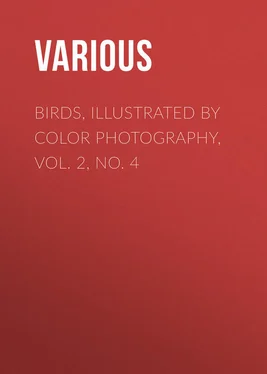



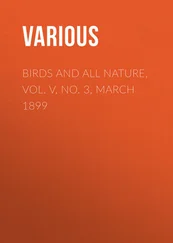
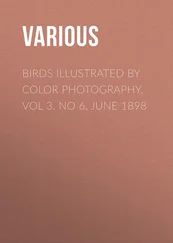
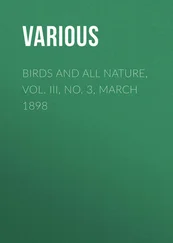
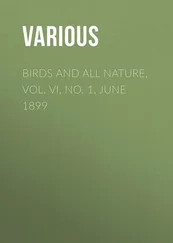
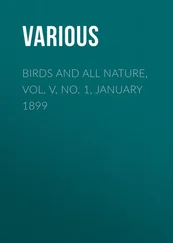

![Various - Birds Illustrated by Color Photography [January, 1898]](/books/746296/various-birds-illustrated-by-color-photography-ja-thumb.webp)

![Various - Birds Illustrated by Color Photography [February, 1898]](/books/746443/various-birds-illustrated-by-color-photography-fe-thumb.webp)